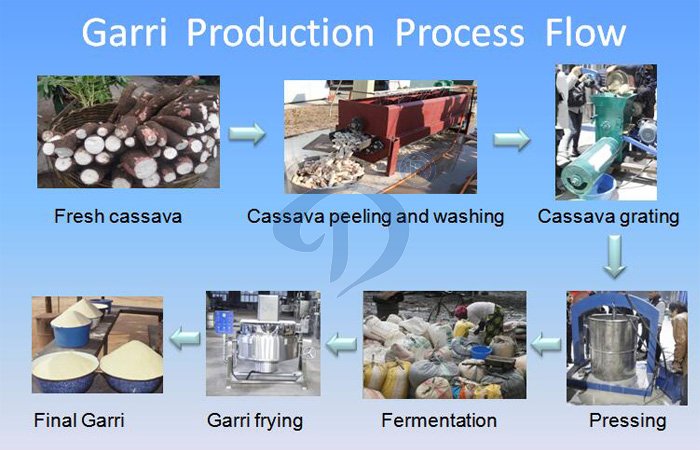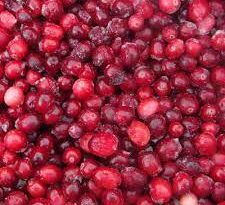Garri (Cassava) Production Process Complete Guide
Some people might be wandering the process involved in the production of garri, you might be asking questions like what is garri? how is garri made? From what is produced? How is being processed and all that? You don’t need to worry because in this article we are going to be telling you all the processes involved in it.
Garri is a carbohydrate food that you get from the processing of your raw cassava.
As we all know, it is a major food or meal for West African countries, most especially Nigerians and in Nigeria, the Igbo people in particular, that’s why it can also be called garri Nigeria or Nigerian garri sometimes…. Smiles!
Garri food can be eaten by mere soaking it in cold water with honey or adding sugar to it, to make it very rich you can add coconut, palm kernel nuts, dry fish, milk, groundnut, you can also make swallow or pasta with garri and when preparing a delicious soup like okra, egusi soup, vegetable soup, groundnut soup, ayoyo soup and beans soup etc.
The way you process your garri most of the time and how you store them can normally affect how long it will stay on the shelf or in the store because when your cassava is not well processed it cannot last for long in the store room.
Therefore when you process your cassava very well and properly, you can store it for a long period.
It can be stored for a period of six to seven months or more. You have to roast or fry your garri properly to reduce its moisture content which normally contributes to early spoilage or even the cause of spoilage.
Read Also: Garri Processing and Reasons why Garri Business is a very profitable agribusiness to venture into

According to experts in the field of garri processing, they said if you want good garri to last long on the shelf or in the store, then you must properly dry it to lower its moisture content level using flat surfaces or plastic buckets.
They also advise not to keep or store garri in a moist environment or leave the garri open in areas with high humidity.
The result you get as a result of this is that your garri will begin to develop molds and spoil i.e if you leave the garri open in open areas with high humidity.
You have to package your garri very well in sacks and then store them in a cool dry place to avoid spoilage or loss.
As we have said earlier stated that garri is being processed from cassava, so to process your garri the first stage is to harvest the quantity of cassava you will use to produce the garri.
The quantity of the cassava you harvest determines the quantity of garri you get after production.
You must have that in mind because you cannot expect to harvest a little quantity of cassava from form and expert to produce a high or plenty quantity of garri and vise-versa (you cannot also harvest plenty quantity of cassava and get very little quantity of garri).
Read Also: A Comprehensive Guide on How to Plant Cassava
The choice is now left for you to decide how plenty you want to produce. When processing cassava into garri, the raw cassava now will have to undergo some services that will tell if truly you can get garri out of cassava because cassava can be used to produce or process other food apart from garri.
Another thing we should have in mind is that it is not only garri that can be produced or processed out of cassava.
Steps involved in the Cassava Processing for Garri

The following are steps that are involved in the cassava processing for garri;
1. The first step is to harvest and then sort your cassava to get the best out of it.
2. Then you peel the cassava roots into bowls or horns.
3. Wash the cassava root and also clean it.
4. Then you grate the cassava roots into a mash.
5. You will then ferment the cassava mast to remove some hydrocyanic acid
6. Press the cassava after putting them in a sack to drain the water in the garri. This stage should be done properly to properly remove the water.
7. After removing or draining the garri mash, then shift the wet cake into grits.
8. Fry or roast the grits to form the garri.
Read Also: How to Control Cassava Diseases and Pests
9. Spread the garri in a thin larger or open basin and allow it to cool.
10. Grind or sieve the garri to break larger gravels.
11. Then pack the garri in airtight bags and store properly, make sure they are properly packed into the airbag to avoid early spoilage
The main reason a propose that you subject your cassava to go through all this process, is simply to remove all the hydrogen cyanide in the cassava aid to produce a good desirable flavor.
The drying, soaking in water, and rinsing of the garri effectively help in reducing the cassavas’ cyanogen content. Then frying of the garri will help to remove cyanide gas and destroy every enzyme and micro-organism.
The end product of garri is normally cream-white or light yellowish with a little sour flavor. Some people, most the east people normally add palm oil to their garri to give it a little sweet taste.
In conclusion, after you harvest your cassava from the farm, you must select only healthy whole roots that are good and appropriate for producing garri because you need to sort your roots to pick the best out of them before you transport the tubers to the cassava processing plant for processing.
After you might have gotten to the cassava plants, offload them and then peel the cassava root with a knife as earlier stated. This can also be done before bringing the cassava to the cassava plant.
Also, make sure you wash your cassava roots properly to remove sand and mud. Wash them with a sponge in clean water to remove the extra peel, spots, and dirt.
Read Also: Best Mattress Waste (Old Mattress) Management Method
There are special machines that can help in all the garri process to ease all the stress and they also save energy and time.
To crown it all let’s quickly look at how to ferment cassava mash in cassava processing before removing and draining the water, shifting the wet cake into grits before frying which is the final process in the garri processing.

These include;
1. Collect the cassava into a clean polythene sack.
2. Tie the sack using a strong cord or rope, and
3. Then arrange the cassava slurry in the fermentation sacks
Read Also: Amazing Business Ideas with Little or No Start-Up Cost for Ladies








